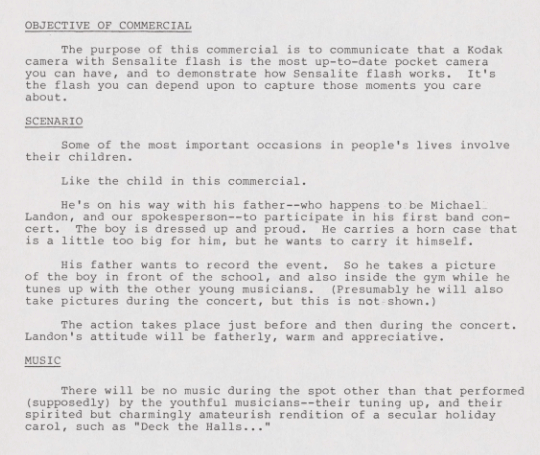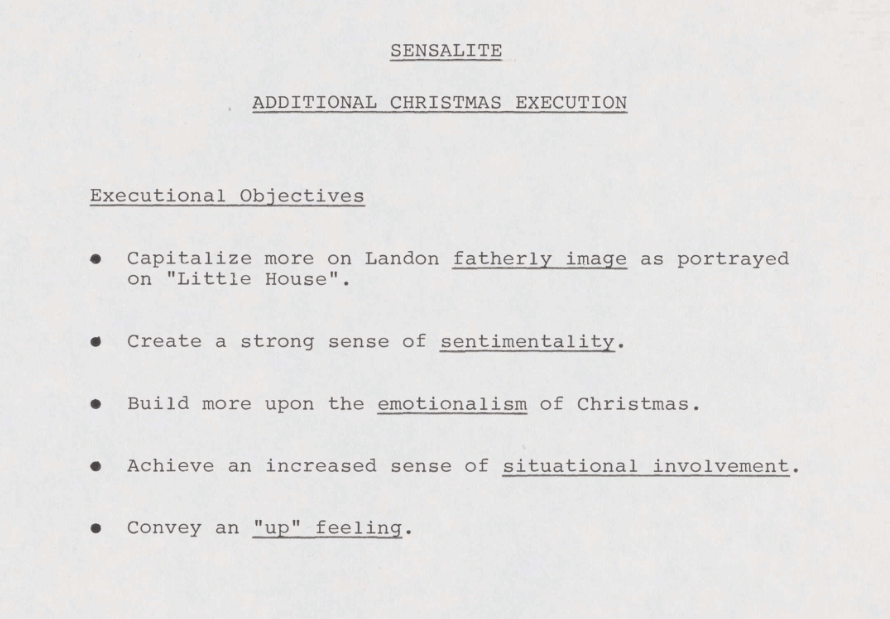Advertising and Christmas
The festive season has many attractions and can evoke many emotions depending on what you like: there’s the family time, the food, the time off, the music, the holiness, the general atmosphere of nostalgia, warm emotion and, of course, the presents and gift giving.
Christmas time now results in a huge amount of consumption and purchasing of stuff! And how do we know what things exist and why they may be worth getting?
One answer to this is advertising. But there’s also a further question of whether advertising actually helps create or manufactures those other feelings, emotions or nostalgia as well as simply selling products. Why might we feel all those other warm fuzzy things? How do we know what to feel? There are many reasons of course but the images we see in mass advertising can't be ignored.
Advertising is a fascinating subject for study that touches on many interesting questions of identity, meaning, desires, feelings, aspirations and persuasion among other things. It’s not often you get to the mechanics of how advertising is made but the archive of one of the world’s oldest advertising agencies, J. Walter Thompson, lets the light in on the arcane (or is it prosaic?) world of ad creation and helps us think through that dynamic.
You get to see exactly what the ad people were trying to do and how they thought they could persuade you to make that purchase and what feelings they were hoping to evoke or leverage.
From the 1960s to the 1990s, Kodak was a giant in the photography world and in 1981, they were pushing their pocket camera, the Sensalite, and hired Thompson to make the ads. AM’s J. Walter Thompson: Advertising America contains treatments and scripts from the company archives that show the development of the ads for this product.
In this case, we have the notes for an advert promoting the Sensalite camera featuring Josh Landon, star of Little House on the Prairie. Through the script and brief for the advert entitled Christmas Concert, we see how the agency framed the Kodak Sensalite as a way to capture the most important moments in people’s lives – in this case, the Christmas experiences of your children.
The ad would conceptualize Landon as a “warm” and “appreciative” father attending his son’s first brass band concert at Christmas; Deck the Halls plays in the background and as he snaps the photo he creates a memory of that special moment.

Kodak: Pocket Cameras Christmas Presentation, 1981, jwtac009008, Reproduced with kind permission from Duke University and Kodak © J. Walter Thompson
Another document from the Kodak account on this ad series details more on the feelings the ad wants to create and this is where the interplay of how advertising impacts our lives and perceptions of things gets interesting. The brief is to build on Landon’s “fatherly image” but also to create “ a strong sense of sentimentality” and to build on the “emotionalism” of Christmas.
This leads us to one of the central questions in studying advertising: are the ad people conjuring these feelings from nowhere and putting them out into mainstream culture for us to ingest and take on such emotions as our own, or are they simply distilling an essence of Christmas that exists “out there” - independently in a culture outside the ad creative’s head - and just serving what we already feel back to us?
Who invented or perpetuates modern Christmas? It may be that advertisers have a hand in helping us know what to feel at this time of year.

Kodak: Naming Committee Review and the New Christmas Spot Guidelines, 1980, jwtac011002, 1980, Reproduced with kind permission from Duke University and Kodak © J. Walter Thompson
About the collection
J. Walter Thompson: Advertising America is out now.
Recent posts

The blog highlights American Committee on Africa, module II's rich documentation of anti-apartheid activism, focusing on the National Peace Accord, global solidarity, and student-led divestment campaigns. It explores the pivotal role of universities, protests, and public education in pressuring institutions to divest from apartheid, shaping global attitudes toward social justice and reform.

This blog examines how primary sources can be used to trace the impact of young voices on society, particularly during pivotal voting reforms in the UK and the US. Explore materials that reveal insights into youth activism, intergenerational gaps, and societal perceptions, highlighting their interdisciplinary value for studying youth culture, activism, and girlhood across history.
